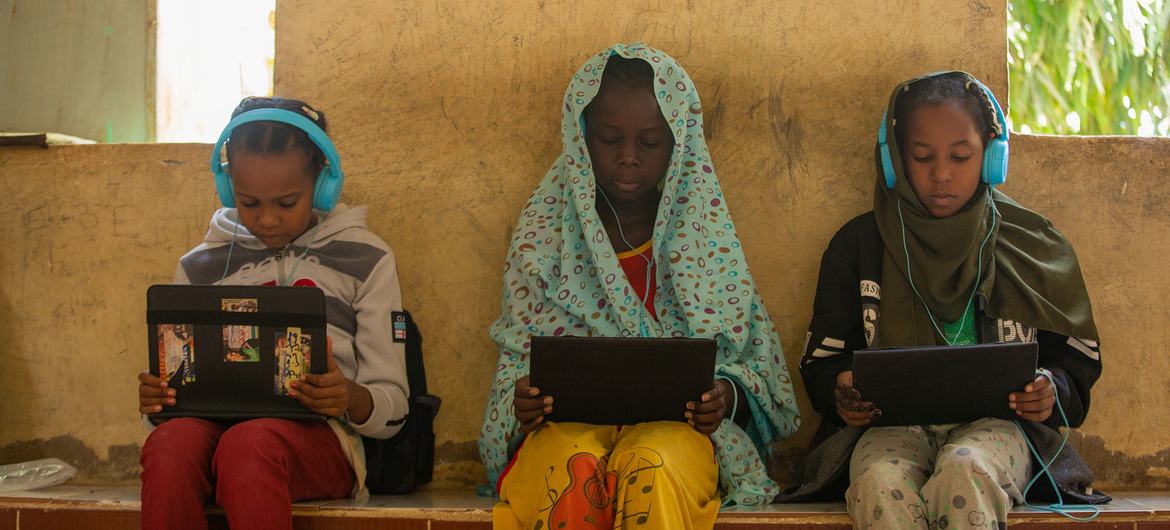251 million children still out of school worldwide, UNESCO reports
Despite decades of educational progress and international commitments, a quarter of a billion children and youth remain out of school worldwide, UN education agency UNESCO’s latest Global Education Monitoring Report revealed on Thursday.
Despite decades of educational progress and international commitments, a quarter of a billion children and youth remain out of school worldwide, UN education agency UNESCO’s latest Global Education Monitoring Report revealed on Thursday.
The findings reveal that global efforts to ensure universal education have hit a concerning plateau, with the out-school population reducing by only 1 percent in nearly 10 years.
Progress and challenges
“Education is the key driver of prosperous, inclusive and peaceful societies,” said UNESCO Director-General Audrey Azoulay. “Yet, quality education risks being the privilege of a few if we do not take serious measures to give every child across the globe the same chance to learn and thrive,” she added.
While there has been progress in educational enrollment - with 110 million children entering school since the adoption of the UN Sustainable Development Goal on Education in 2015 – disparities remain persistent.
The completion rates show improvement, with 40 million more young people finishing secondary school compared to 2015.
However, the gap between rich and poor nations remains particularly alarming. According to the report, in low-income countries, 33 percent of school-aged children and youth are out of school, compared to just 3 percent in high income countries.
The report highlighted that sub-Saharan Africa faces the greatest challenges, hosting more than half of all out of school children and adolescents globally.
Financing the future
A second report on Thursday, the UNESCO-World Bank Education Finance Watch 2024, points to the chronic underinvestment as a primary obstacle. The disparity in education spending is striking, with the report revealing that high income countries invest $8,543 per learner while low- and middle-income countries manage only $55 per student.
The situation is further complicated by debt burdens. According to the report, in Africa, countries now spend almost as much on debt servicing as they do on education, while global education aid has declined from 9.3% in 2019 to 7.6% in 2022.
In response, UNESCO, working alongside Brazil’s G20 presidency, is calling for innovative financing mechanisms, including debt-for-education swaps.
“Equity and inclusion in and through education are fundamental to Brazil’s vision of social development,” said Brazil’s Education Minister Camilo Santana at the UNESCO Global Education Meeting in Fortaleza, where leaders are working to translate discussions into concrete actions to address this global education crisis.
© UN News (2024) — All Rights Reserved. Original source: UN News
Where next?
Browse related news topics:
Read the latest news stories:
- Forest Guards Risking Their Lives To Keep Malawi’s Forests Standing Monday, March 31, 2025
- Global Climate Action Progressing, but Speed and Scale Still Lacking Monday, March 31, 2025
- ‘Student Protests Have Sparked Solidarity, Empathy and a Renewed Belief in Collective Action’ Monday, March 31, 2025
- Southeast Asia’s Economies Can Gain Most by Packaging Ambitious Reforms Monday, March 31, 2025
- Myanmar earthquake tragedy ‘compounds already dire crisis’ Monday, March 31, 2025
- Gaza: UN relief chief demands ‘answers and justice’ following killings of first responders Monday, March 31, 2025
- Myanmar earthquake: Search and rescue efforts continue in race against time Sunday, March 30, 2025
- Looking beyond GDP to reach the Sustainable Development Goals Saturday, March 29, 2025
- UN chief strongly condemns killing of Kenyan peacekeeper in Central African Republic Saturday, March 29, 2025
- Myanmar quake: More than 1,600 reported killed, as UN aid operation supports rescue efforts Saturday, March 29, 2025
Learn more about the related issues:
